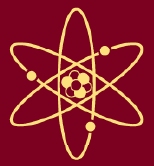PHZ3400-09 Modern Physics: Difference between revisions
m (→Introduction) |
m (Mentioned Ingo Wiedenhover) |
||
| Line 22: | Line 22: | ||
|} | |} | ||
Modern Physics introduces the exciting developments of physics in the 20th Century (and some of the 21st). Well, anything that happened after PHY2049. We will see how the seeds of this great revolution were planted in the greatest triumph of the 19th century physics! And a revolution it was! There is no other way to describe the fascinating, surprising, and mind boggling discoveries of relativity, quantum mechanics, and the structure of matter. Some of the great scientists we will encounter along the way are Planck, Einstein, Curie, Rutherford, Bohr, Pauli, Dirac, Schrodinger, Heisenburg, Fermi, Geynman, Rydberg, and Schrieffer. Two of these giants of the 20th century physics, Dirac and Schrieffer, have served on the FSU faculty! | '''Modern Physics''' introduces the exciting developments of physics in the 20th Century (and some of the 21st). Well, anything that happened after PHY2049. We will see how the seeds of this great revolution were planted in the greatest triumph of the 19th century physics! And a revolution it was! There is no other way to describe the fascinating, surprising, and mind boggling discoveries of relativity, quantum mechanics, and the structure of matter. Some of the great scientists we will encounter along the way are Planck, Einstein, Curie, Rutherford, Bohr, Pauli, Dirac, Schrodinger, Heisenburg, Fermi, Geynman, Rydberg, and Schrieffer. | ||
Two of these giants of the 20th century physics, Dirac and Schrieffer, have served on the FSU faculty! | |||
==Introduction== | ==Introduction== | ||
| Line 102: | Line 104: | ||
==Sources== | ==Sources== | ||
* Description of Modern Physics - Syllabus written by Ingo Wiedenhover | |||
Revision as of 03:29, 21 January 2009
“ Ah, the reason we all majored in physics in the first place... ”
| ||||||
Modern Physics introduces the exciting developments of physics in the 20th Century (and some of the 21st). Well, anything that happened after PHY2049. We will see how the seeds of this great revolution were planted in the greatest triumph of the 19th century physics! And a revolution it was! There is no other way to describe the fascinating, surprising, and mind boggling discoveries of relativity, quantum mechanics, and the structure of matter. Some of the great scientists we will encounter along the way are Planck, Einstein, Curie, Rutherford, Bohr, Pauli, Dirac, Schrodinger, Heisenburg, Fermi, Geynman, Rydberg, and Schrieffer.
Two of these giants of the 20th century physics, Dirac and Schrieffer, have served on the FSU faculty!
Introduction
- Notes: Lecture
- Lecturer: Dr. Vald's Friend
- Time: 12:20pm - 1:10pm
- Dates: Wednesday, January 14, 2009 & Friday, January 16, 2009
- Place: The Classroom Building, HCB 317, Florida State University
“ At the end of the 19th century, scientists had gotten quite a lot done. But there was no explanation for things that happened at the quantum level. What happened when things got very small and very fast? ”
Black Body Radiation
- Blackbody absorbs / not emits light
- Stefan Boltzmann Law I = sigma T^4
- Wien's Law lambda T = b
- Blackbody Radition Spectrum: UV catastrophe
Classical physics does not explain that
- This led to Planck's Hypothesis
Planck's Hypothesis
- radition comes from eletric oscillators
- energy of each mode of oscillation is quantized E = n h v
- Energy can be emitted or absorbed
Specific Heat of Solids
- Cv / Na = const
- Cv = 3 Na K from classical physics
- But at low temperatures C drops sharply and approaches zero
- Phonons: quantization of lattice vibrations
Photoelectric Effect
- Einstein got a nobel prize for this instead of relativity
- Apparatus measure the number of photoelectrons and the maximum Kinetic energy
- Observations not explained by classical wave theory of light
- Increasing intensity of light increases the number of photoelectrons but not the maximum KE
- Red light emits no electrons independent of intensity
Particle-Wave Duality and de Broglie Wavelength
- de Broglie Hypothesis
- everything in nature has both wave and particle nature
- lambda = h / p
- Davidsson Germer experiment
- Thompson Reid experiment
Heisenberg's Uncertainty Principle
- x p > h bar
- t E > h bar
- Measurement always disturbs object
- Deterministric view of nature is fundamentally flawed
Atomic Spectra
- Spectra Lines and Atomic Spectra
- Plum Pudding model of atom
- Rutherford's scattering experiment
- Planetary model contradicts experiments
- Stability of matter
- Atomic Spectra lines
- Bohr's Model 1913 basic hypothesis
- Electrons in atoms follow classical physics and Rutherford's atomic model
- blah blah
- blah blah
- Bohr's theory applied to hydrogen like atoms
- yadda yadda
- Line Spectra Rydberg's
Atomic Shell Structure
- quantum numbers (principal, orbital, magnetic, spin)
- Selectron rule in quantum transitions N = +- 1
- Electron configurations
- Pauli expclusion principle
- Periodic table
Schroedinger Equation
- Describes many things but not waves at a very high energy
Sources
- Description of Modern Physics - Syllabus written by Ingo Wiedenhover
